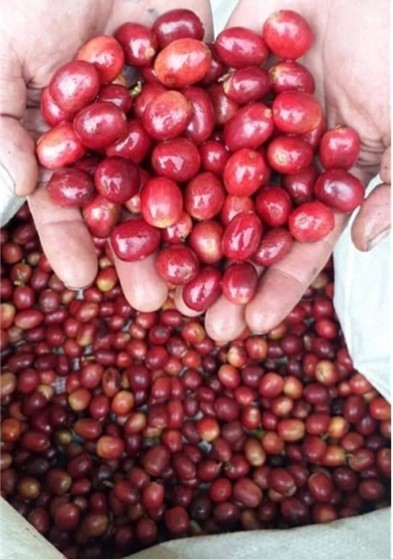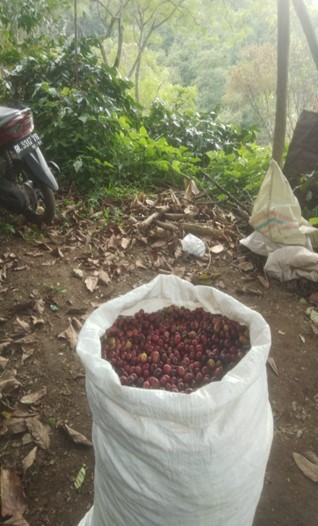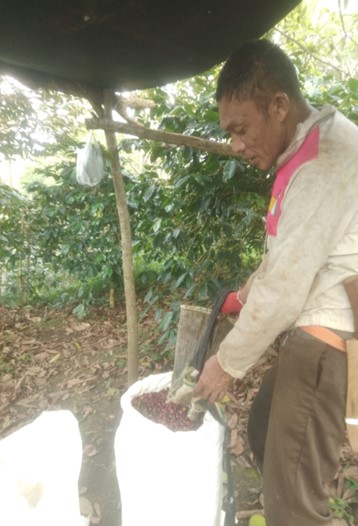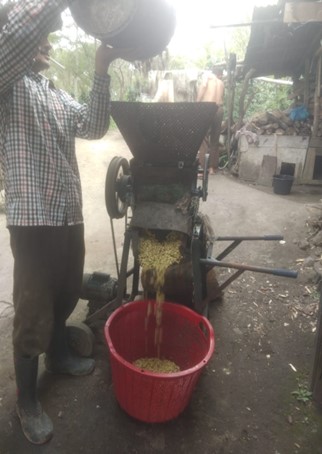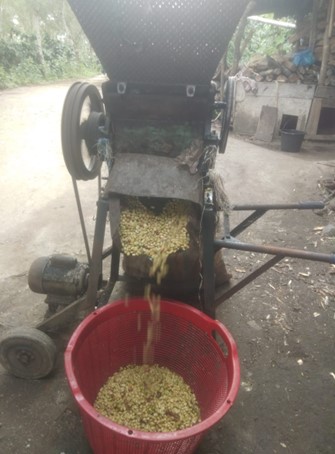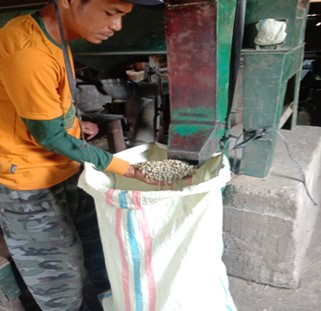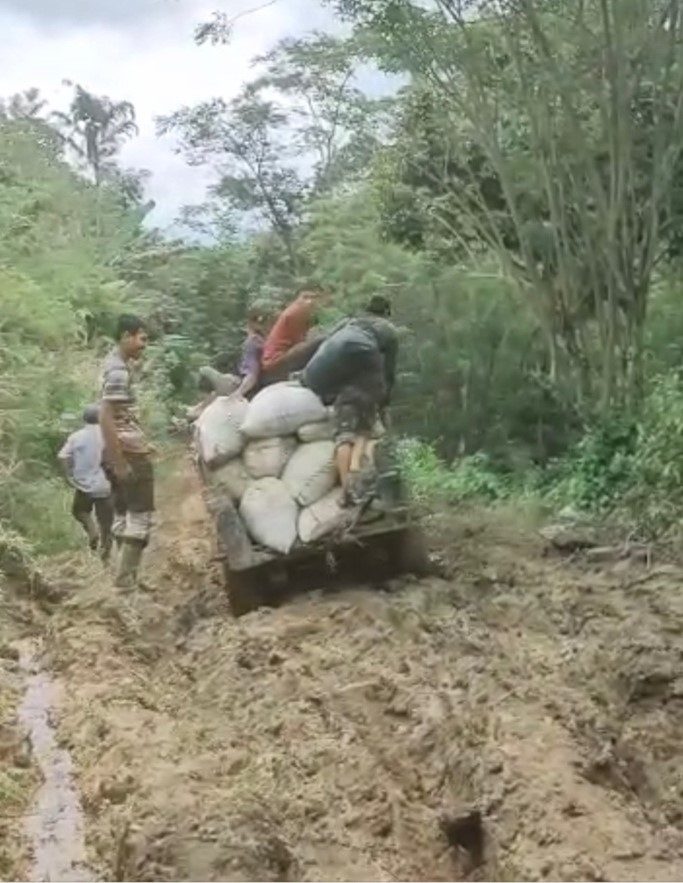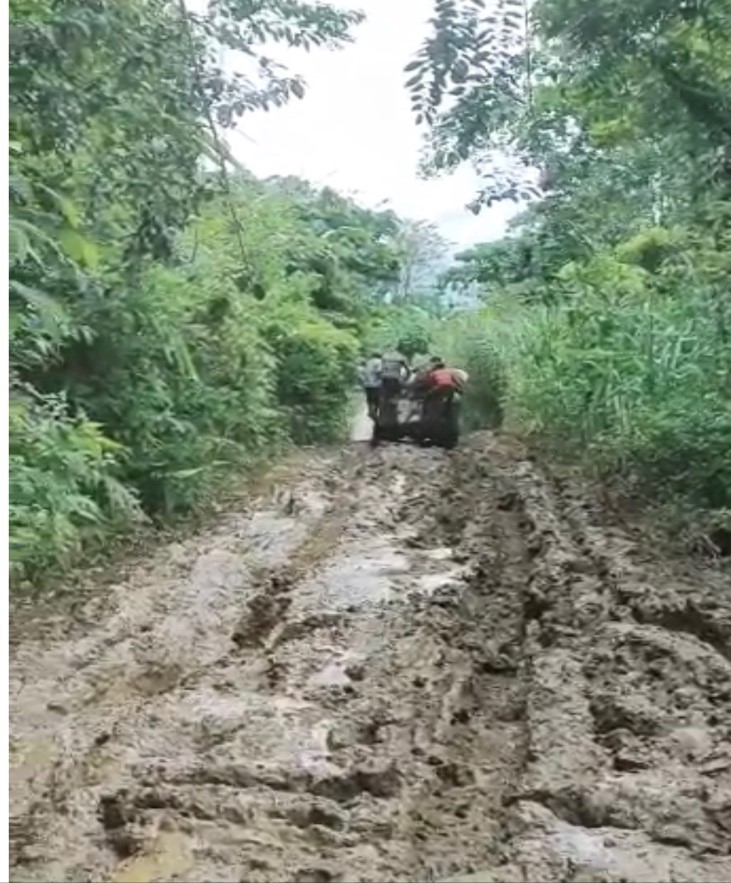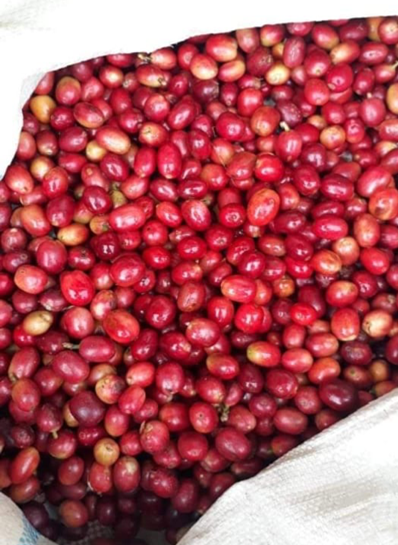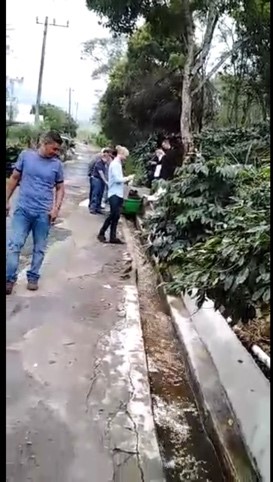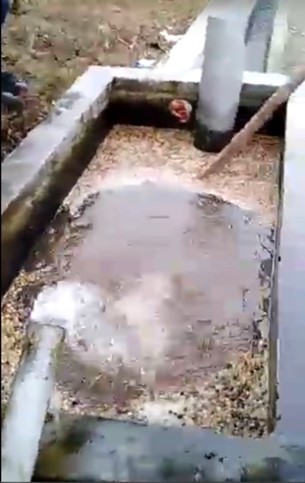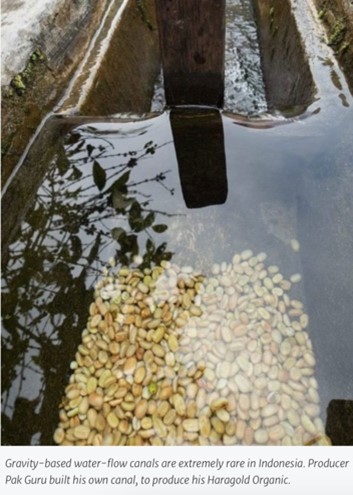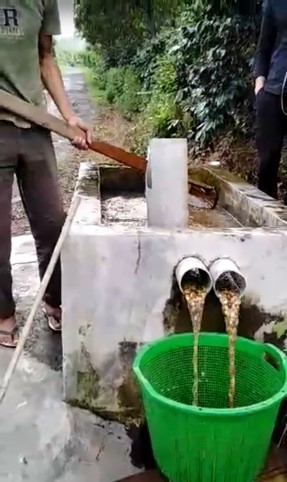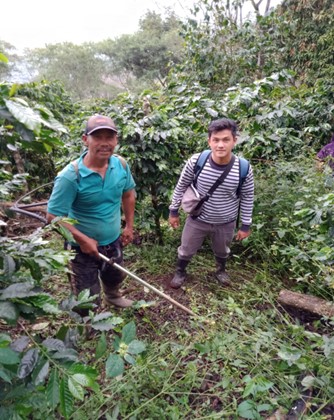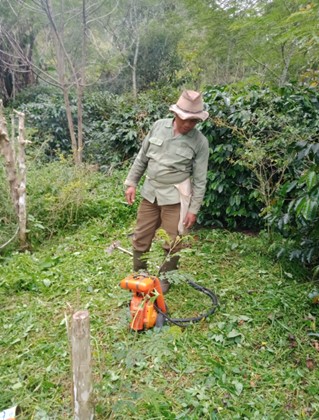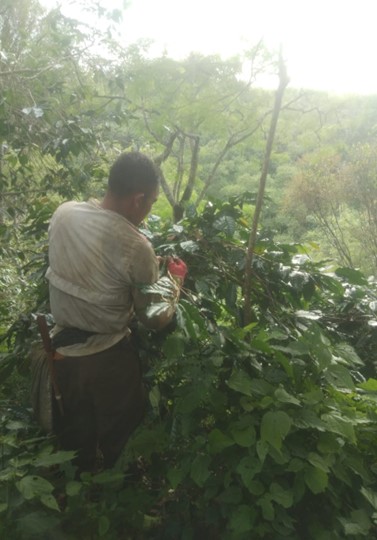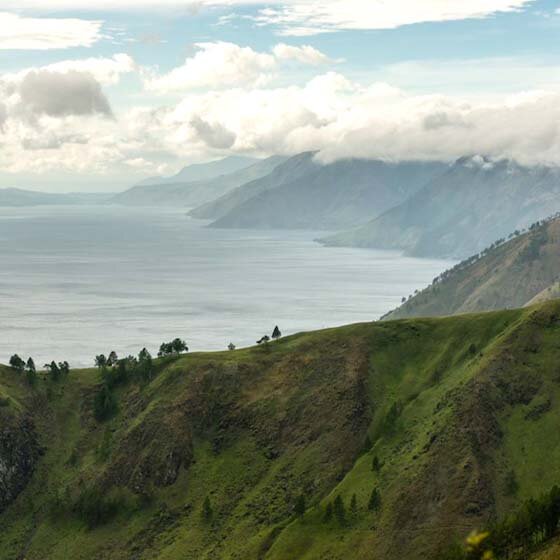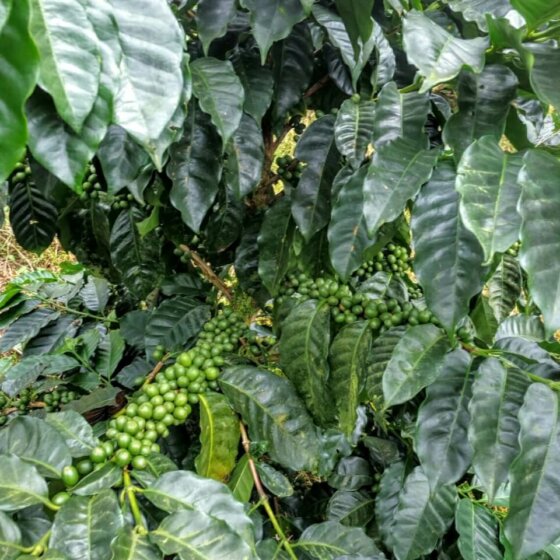In the early 19th century, Ketol was used by the Dutch colonial as sugar cane plantation. However in 1920 coffee farmers started to cultivate Arabica, smallholding plantations with an area of max 1 ha each garden. In Ketol, there is a mountain which is called by local people “Gunung Tapak Moge” and one of the village is called Jaluk which is located near the hill and where the cooperative have their mills. In Gunung Tapak Moge there is natural clear spring water that flows through the village Jaluk near the mill and becomes water resources for coffee processing. The running clear water is used by the cooperative members of Mahara to wash the red cherries and process it into a Wet Hulled process. Traditionally coffee farms in Ketol are monoculture and using shades trees such as Albazia and Leucaena trees as shadow trees. Some of the farmers still grow the old Typica varietal, because usually, the farmers still have the seedling from those coffee trees. As such a type becomes incredibly scarce (low-yielding), they instead prefer to plant diverse varietals on their farm such as S 795 as they were given by the government, Ateng, East Timor, and Long Berry.
Coffee fact sheet

Indonesia Gayo Blue Mountain KSU Mahara
Cooperative Coffee
This coffee has a lively, complex acidity, a medium to heavy body and flavors of herbs and dark chocolate.
| Variety: | Ateng, Timor, Long Berry, Typica |
| Processing: | semi-washed |
| Grade: | 1 |
| Body: | Medium to heavy |
| Acidity: | Complex, Fruity, Sweet |
